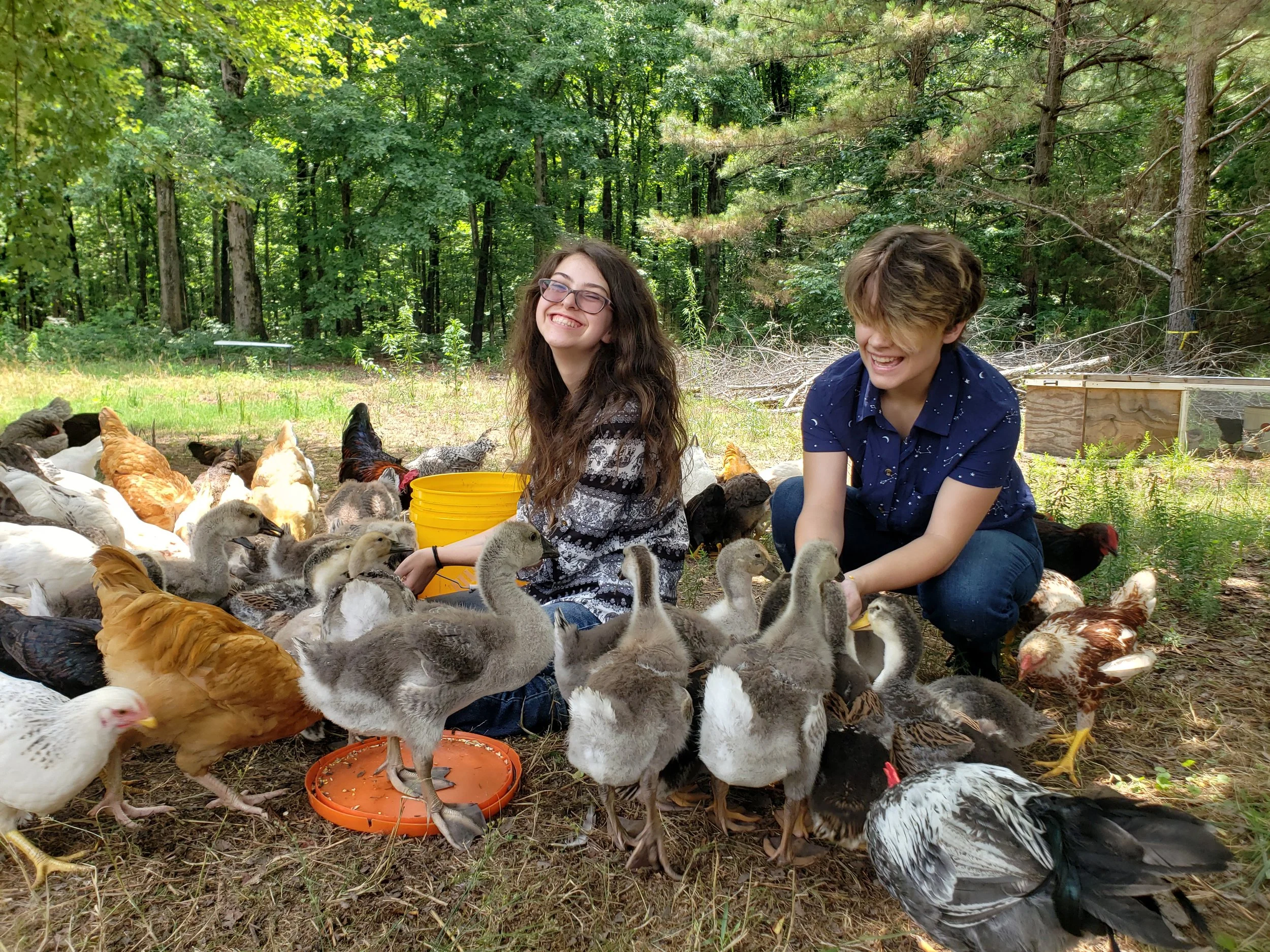Socializing Chicks
A Gentle Guide to Introducing New Chicks to Your Flock:
There’s something magical about adding new chicks to your existing flock. The peeping of tiny fluff balls, the excitement of fresh energy in the coop—it’s enough to warm any chicken keeper’s heart. But as much as we’d love for our established hens to welcome them with open wings, the reality is that chickens have a social hierarchy, and new arrivals can ruffle some feathers. To ensure a smooth transition, it’s important to introduce new chicks gradually, giving both the newcomers and your existing flock time to adjust. Here’s a step-by-step guide to making the process as peaceful as possible.
1. Let Them Grow First
Chicks should be at least six to eight weeks old before they join the flock. They need time to grow, feather out, and develop enough confidence to hold their own. Smaller chicks are at greater risk of bullying, so giving them a strong start will help set them up for success.
2. See, But No Touch
One of the best ways to introduce new chicks is to allow them to be seen but not touched. A temporary wire enclosure within your main coop or run will let both groups get used to each other’s presence without physical confrontation. Give them a few days to observe and communicate through the safety of the barrier.
3. The Safe Introduction Zone
After about a week of separation, allow brief supervised mingling in a neutral space—somewhere unfamiliar to both groups. This reduces territorial disputes and helps both parties feel more comfortable. Keep an eye out for signs of aggression, and be prepared to intervene if necessary.
4. The Overnight Method
Once the older hens seem used to the presence of the chicks, one of the easiest ways to integrate them is by adding the chicks to the roost in the middle of the night. Chickens are less likely to be aggressive when they wake up together, as they instinctively accept who is around them in the morning. This method often shortens the transition period and minimizes stress for both the new and old members of the flock. Be sure to check in at dawn to ensure a peaceful start to the day.
5. Provide Extra Feed and Space
To prevent food-related squabbles, add extra feeders and water stations. This ensures everyone has access to resources and reduces competition. Additionally, having multiple perches, hideaways, and dust-bathing spots will give the chicks room to escape any overly assertive hens.
6. Observe the Pecking Order
Chickens naturally establish a social hierarchy, and a little pecking is normal. However, if you notice excessive aggression, such as relentless chasing, feather plucking, or injuries, you may need to separate the chicks again and extend the introduction period. A useful trick to distract from pecking is to hang a red cloth or introduce other red objects in the coop. Chickens are naturally drawn to the color red, and focusing on the cloth can reduce aggressive behavior towards new flock members. This simple distraction can make a big difference in creating a calmer integration process. Chickens naturally establish a social hierarchy, and a little pecking is normal. However, if you notice excessive aggression, such as relentless chasing, feather plucking, or injuries, you may need to separate the chicks again and extend the introduction period.
7. Patience and Positive Reinforcement
Some flocks adapt quickly, while others take a bit longer to accept new members. Your patience will go a long way in ensuring a stress-free transition. Offering treats when the flock is calm and peaceful can also create positive associations with their new companions.
A Happy, Harmonious Coop
Successfully integrating new chicks into your flock is a rewarding experience that deepens the bonds between you and your birds. With a slow, thoughtful approach, your flock will soon be scratching, pecking, and dust-bathing together in harmony. So, whether you’re expanding your backyard coop or raising a new generation of feathered friends, taking the time to socialize them properly will lead to a thriving, happy flock. And really, is there anything better than watching chickens of all ages enjoying life together?
